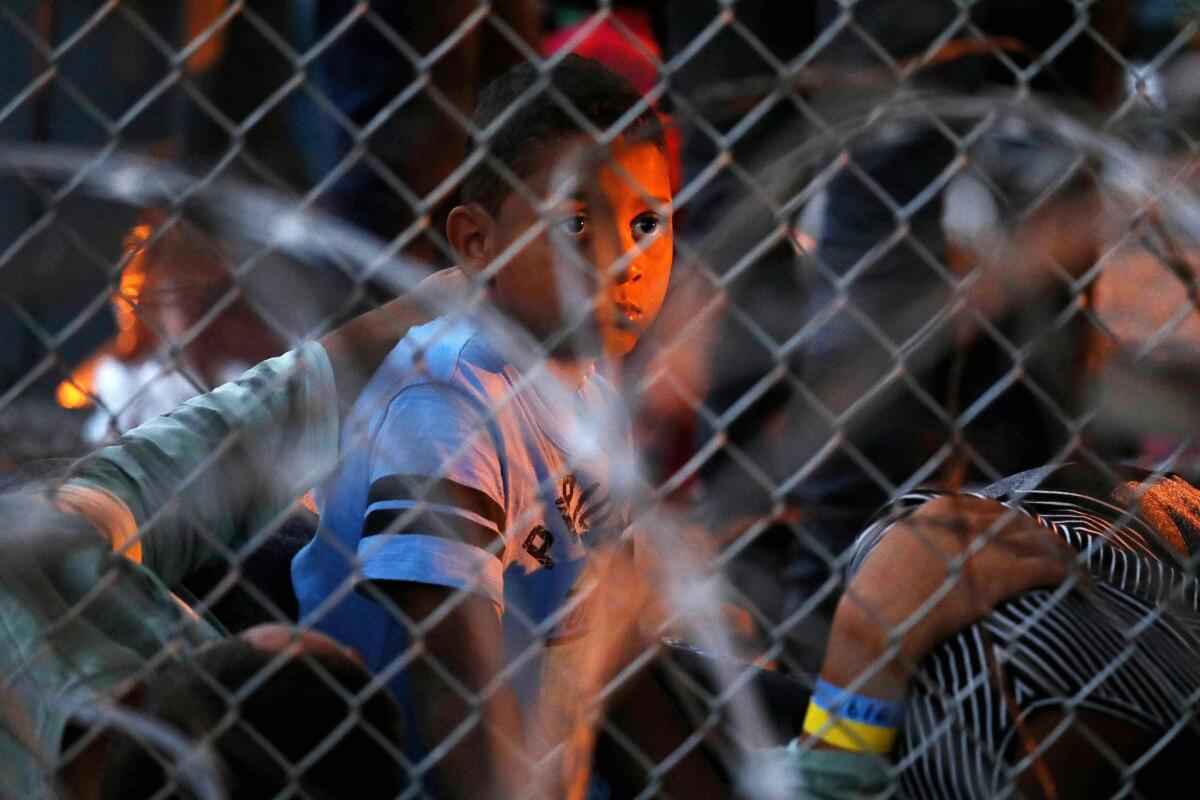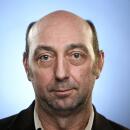Some Holocaust survivors oppose ‘concentration camp’ comments. But they’re also upset by treatment of migrants

Reporting from Las Vegas — The detention centers where the U.S. government has held migrant children have sparked widespread outrage. But are they really, as some critics have suggested, concentration camps?
Celina Biniaz doesn’t think so. To her, a concentration camp is a place where captives live in daily fear of being killed.
She should know.
At 13, she was in Auschwitz. She came face to face with the notorious Josef Mengele and saw the smoke from the chimneys as the sky darkened with ash of fellow Jews burned in ovens. She escaped with the help of Oskar Schindler, whose story was told in the Steven Spielberg film “Schindler’s List.”
That is not what is happening at the border, said Biniaz, now 88 and living in Camarillo.
At the same time, she said, she doesn’t want to let the Trump administration off the hook for what she considers the deplorable treatment of families and children at the U.S.-Mexico border.
The humanitarian crisis there has been sidetracked by a debate over language. The intent of those invoking the Holocaust comparison was clear: to issue a moral wake-up call for the country.
“The U.S. is running concentration camps on our southern border, and that is exactly what they are,” Alexandria Ocasio-Cortez, the freshman House Democrat from Brooklyn, said last week on an Instagram Live post. “If that doesn’t bother you … I want to talk to the people that are concerned enough with humanity to say that ‘never again’ means something.”
She later tweeted an Esquire magazine article that quoted several experts making the case that the migrant detention facilities — where children have been separated from their parents and deprived of soap, clean water, toilets, toothbrushes, adequate nutrition and sleep — are concentration camps.
“Things can be concentration camps without being Dachau or Auschwitz,” Waitman Wade Beorn, a Holocaust and genocide studies historian, told the magazine. “Concentration camps in general have always been designed — at the most basic level — to separate one group of people from another group. Usually, because the majority group, or the creators of the camp, deem the people they’re putting in it to be dangerous or undesirable in some way.”
The actor George Takei, who as a child during World War II was interned with his family and other Japanese Americans, subscribes to that definition.
“I know what concentration camps are,” he tweeted this week. “I was inside two of them, in America. And yes, we are operating such camps again.”
But others say the Holocaust comparisons are harmful.
The Holocaust gets cheapened and the event it was being compared to gets lost in the subsequent blowback, said Jeff Salkin, a rabbi in Hollywood, Fla., who wrote a blog post about Ocasio-Cortez’s comments.
“Her first error was in assigning a dysfunctional metaphor and not simply condemning what is happening in those camps,” Salkin said. “The controversy over her language has sidelined the conversation over what is really happening — children don’t have soap. Children are going to die. That’s bad enough. You don’t have to drag Dachau into this. But because some people are deaf, sometimes you have to scream.”
The U.S. Holocaust Museum issued a statement this week saying it “unequivocally rejects efforts to create analogies between the Holocaust and other events, whether historical or contemporary.”
According to the museum, the Nazis ran four types of camps between 1933 and 1945. There were 1,830 forced labor and transit camps, which were the stop before Jews were taken to a killing center. Prisoners lacked food, clothing, rest or proper equipment.
There were 938 concentration camps, which were holding sites for those perceived to be threats to the Nazi regime. An additional 559 camps were for prisoners of war, along with a large number of uncounted “subcamps.”
Then there were the killing centers, of which there were five.
Frances Elson, 75, understands all that.
Two years before she was born, her parents were put in prison and relocation camps under the Nazis. Her uncle was killed in Treblinka, along with one of her aunts.
In Elson’s view, that cataclysm still has important lessons for what’s happening in the U.S. today.
The camps didn’t show up overnight, she said. The persecution of Jews was an incremental, dehumanizing process whose early stages are paralleled by the Trump administration’s treatment of migrants who enter the U.S. illegally or arrive on the border seeking asylum.
“My mother talked about what it was like in school until they said she couldn’t go to school,” Elson said. “Then you couldn’t vote. And then you couldn’t have a job. Then you’re told you have to live in a certain neighborhood and then they build a wall around the neighborhood. That’s how it starts.”
This isn’t the first time the slaughter of 6 million Jews has been invoked to draw attention to a cause or criticize a foe.
Five years ago, a San Juan Capistrano city councilman compared three colleagues to Adolf Hitler, Italian dictator Benito Mussolini and the Ku Klux Klan. In 2015, Robert F. Kennedy Jr. apologized for using the word “holocaust” to describe the health effects of vaccine programs in the United States.
The term “nazi” has been attached to other groups: surf nazis, grammar nazis and even the infamous “Soup Nazi” in the show “Seinfeld.”
The references became so common that in the early 1990s, attorney and author Mike Godwin created his own Law of Nazi Analogies: “As an online discussion grows longer, the probability of a comparison involving Nazis or Hitler approaches one.”
Esther Finder, president and founder of the Nevada-based Generations of the Shoah — a Hebrew term used for the Holocaust — said she didn’t agree with Ocasio-Cortez’s choice of words.
But she also thought the reaction of those who took issue with the comments was overblown.
“I don’t like to engage in competitive suffering,” Finder said. “What we are doing is very dangerous in terms of humanity. To put anybody in the situations the immigrants are in and the conditions they are under I think is not only cruel but morally reprehensible. But I am concerned in getting hung up on the term ‘concentration camps.’”
Salkin said the lessons from the Holocaust need to be learned — especially as the voices of those who suffered through it are dying off. Even though he disagreed with Ocasio-Cortez’s terminology, he thought her intentions were good.
The nation needs a wake-up call, he said, and to call the suffering at the border what it is in stark, descriptive terms that will effect change.
“We cannot afford silence,” he said.
More to Read
Sign up for Essential California
The most important California stories and recommendations in your inbox every morning.
You may occasionally receive promotional content from the Los Angeles Times.











